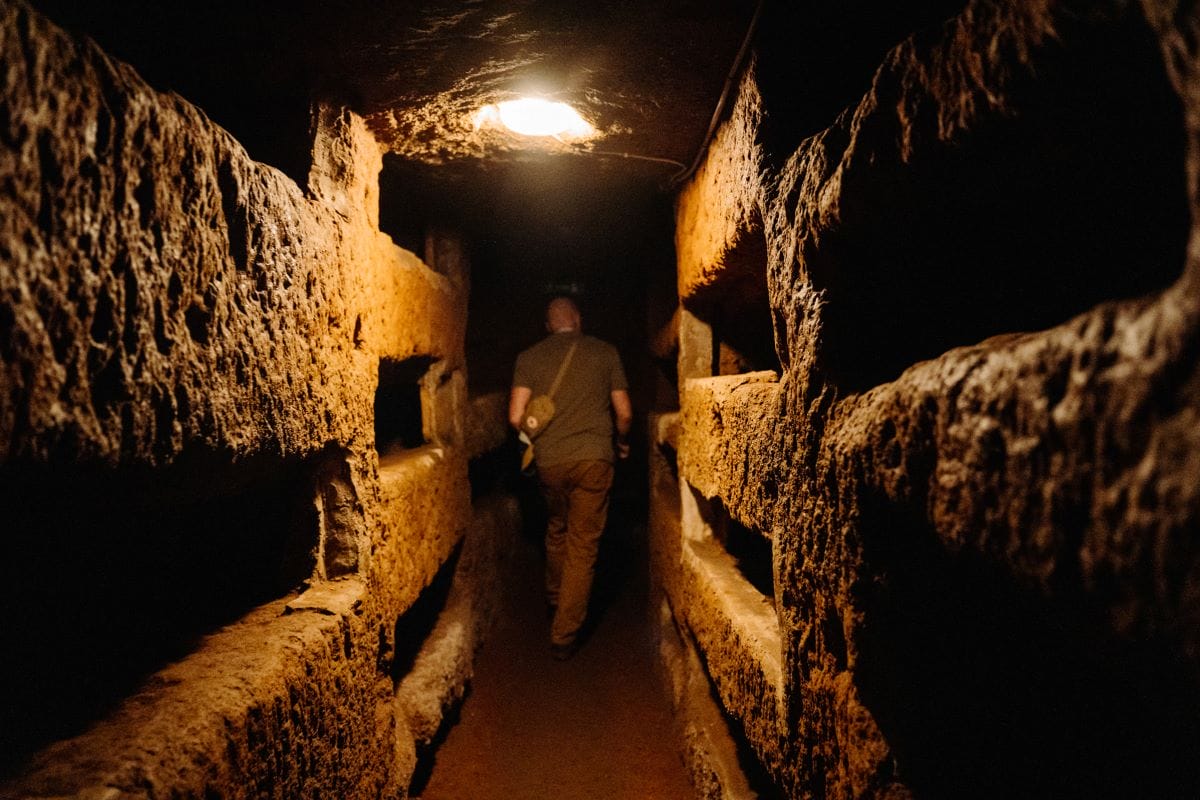
Exploring Underground Rome: 10 Catacombs, Crypts & Ancient Secrets
May 21, 2025
Visitors could spend a lifetime seeing all the sights there is to see in Rome. But there’s even more to Rome than meets the eye. To truly dive in to Rome’s past is to head underground. Rome is a city built upon a city. The remnants of ancient Rome form the skeleton of today’s Eternal City. Underground Rome is a tapestry woven with layers of time, a labyrinth showcasing the city’s rich heritage. Unveiling this hidden tapestry is akin to unraveling the city’s soul, layer by layer.
Rome has had an incredibly long life. One of the most ancient cities in Europe, it was the Caput Mundi, or head of the world, for nearly 3,000 years. As Rome’s power grew, its capital city continued to evolve, forming layer upon layer of city. Earthquakes, floods and fires formed literal layers of the city, with wars and development creating others. Today, underground Rome’s heritage includes villas, temples, nyphaeums, shrines, bathhouses and nearly every type of building in between.
Much of underground Rome is actually still visible, forming a sort of semi-undiscovered, underground museum – one that’s well worth the visit, perhaps even combined with a Rome tour or day trip nearby too!
Table of Contents
Toggle The Colosseum’s Hypogeum

The Colosseum, has a whole other life underground, in what’s known as its hypogeum.
Rome’s most well-known structure, the Colosseum, has a whole other life underground, in what’s known as its hypogeum. Ancient greek for underground, the hypogeum is an ancient labyrinth of passageways, cells and waiting rooms. At one time, chambers held thousands of warriors preparing for the fight above, while cages held wild animals. Archaeologists have since found the skulls and bones of tigers, giraffes, bears and more. Before, only about 30 percent of the Colosseum was accessible, now, visitors can tour below ground, and get a new perspective into the bloody spectacles held there.
Mithraeum of Circus Maximus
The Circus Maximus was the largest stadium in all of Rome, where large, elaborate chariot races were once held. Today it’s one of the best-preserved Roman imperial circuses and is one of the wonders of underground Rome. Who would have thought that right next to the popular racetrack, a mithraeum, or a shrine dedicated to the god Mithras, hid underground for centuries. The cult of Mithras came from Persia to Rome in the 1st and 3rd centuries before it was stamped out by Roman Christians around the 4th century. The cult of Mithras generally had its meetings and meals underground, as an allusion to the movements of the planets and the cosmos.

The Circus Maximus is one of the most intriguing wonders of underground Rome.
Though most only know the cult from Dan Brown novels, the mysterious religion was practiced in Rome from the first to the fourth centuries and has an integral role in ancient Roman history. The Mithraeum under the Circus Maximus are the largest and perhaps some of the most well-preserved in Rome, but if you’re unable to visit or you’re wildly curious, check out the Mithraeum of Palazzo Barberini, Santo Stefano Rotondo or Santa Prisca.
Basilica of San Clemente
St. Clement’s Basilica is located just a few blocks away from the Colosseum and named after St. Clement, Catholicism’s third pope. It’s real draw, however, is archeological. The 12th-century Basilica is built on top of a 4th century church, which in turn was built on top of a 1st century pagan temple from the cult of Mithras – a wonderful example of the layers of underground Rome – and all three of which you can visit today.
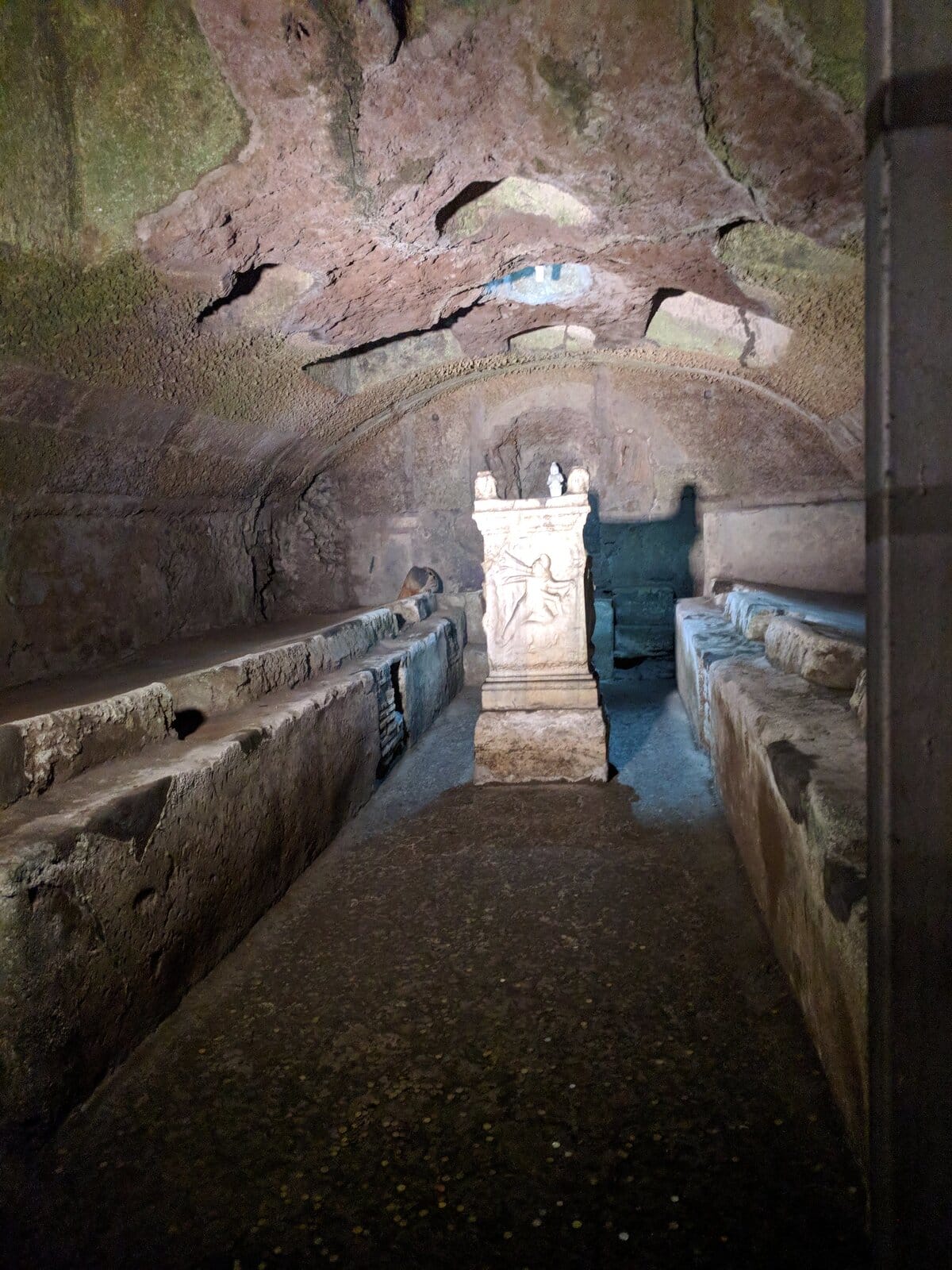
The 12th-century Basilica is built on top of a 4th century church, which in turn was built on top of a 1st century pagan temple. Photo credit: Tyler Bell
Under the basilica you can tour the secret temple, apartments and maybe even an underground stream once used by the Romans. Here you can see Rome’s archeology layer by layer: the difference between the 1st century ground level and today’s ground level is nearly 60 feet! If you’d like an expert guided tour of the church, along with some incredible crypts and catacombs, check out our Underground Tour of Rome.
Domus Aurea
The Domus Aurea, built by Nero in 64 AD, gives visitors a unique glimpse into the extravagant lifestyle of one of Rome’s most loathed emperors. What’s more, the palace was literally hidden for centuries underneath Rome. After Nero’s death, his successors filled the palace with dirt and began building on top – today the Colosseum is where Nero’s lake was once located – and the Domus Aurea was only rediscovered in the 15th century and excavated in the 18th century. Today visitors can tour the enormous pavilion, the surviving terraces and fountains, as well as the underground Octagonal Room
Vatican Necropolis
Rome isn’t the only city built on top of itself – there’s an entire city under the Vatican. Underneath the massive St. Peter’s Basilica lies the Vatican Necropolis. Originally a burial ground, it’s said that the Apostle Peter was buried here after he was martyred in 64 or 67 AD, directly under what is now the high altar of St. Peter’s Basilica.
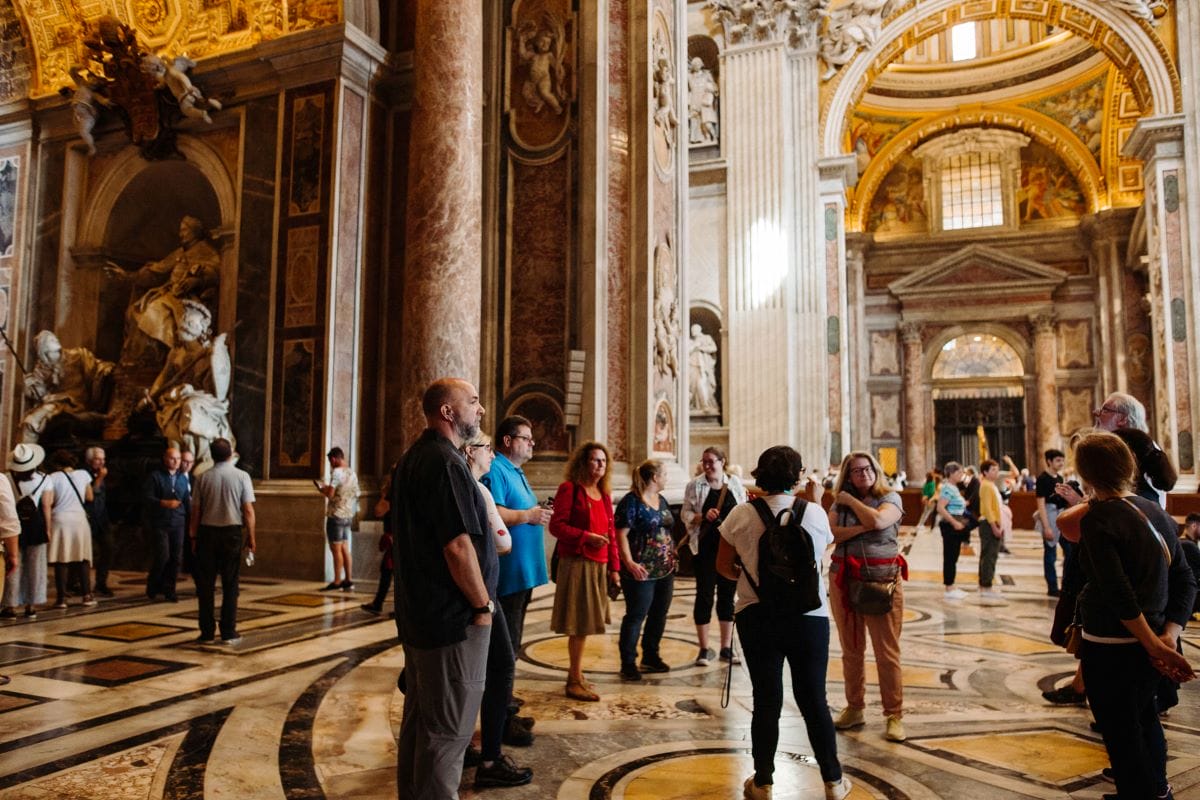
Underneath the massive St. Peter’s Basilica lies the Vatican Necropolis.
Unfortunately, this city is a bit more difficult to visit and definitely requires some advanced planning. According to the Vatican website, it is closed on all Public Holidays and every Sunday. The website has more details on booking times and prices. In the meantime, travel virtually with the Vatican’s virtual tour of the Necropolis.
Vicus Caprarius
Though everyone knows about the Trevi Fountain, hardly anyone knows about the Vicus Caprarius, another wonder of underground Rome that includes a an acqueduct that feeds the famous Trevi Fountain. Also known as the “City of Water” this archeological site is made up of a massive Roman domus the Hadrian-era cistern that feeds into the 19 BC Virgin Aqueduct of the Trevi Fountain – with water still running from the ancient pipes
Stadium of Domitian (Piazza Navona)
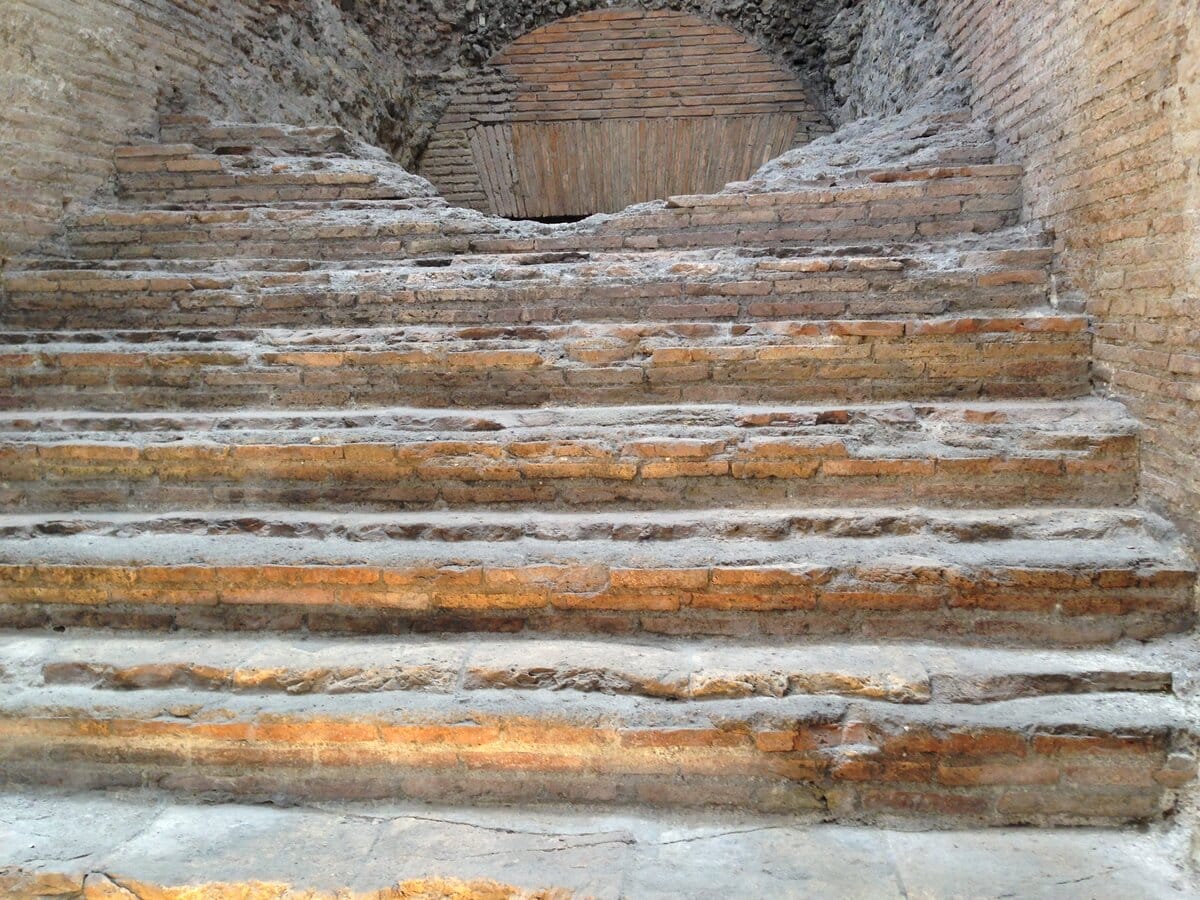
The Domitian Stadium was commissioned by Emperor Domitian in 80 AD to bring the Greek customs of sports competitions to Rome. Photo credit: Sarah E. Bond
The Stadium was commissioned by Emperor Domitian in 80 AD to bring the Greek customs of sports competitions to Rome. Housing nearly 30,000 spectators, it was the first permanent venue of this kind in ancient Rome. In the 15th century, the Stadium was paved over to build Piazza Navona. In fact, the piazza’s shape is nearly an exact replica of the original stadium. Go not only to see the ancient structure that still remains, but also to learn about the history and importance of sport in ancient times, which was always done in a typically Roman blend of entertainment and competition.
The Catacombs of Rome
Italy’s first-century Christians didn’t have a lot of options for burying their dead: they could either be buried in pagan cemeteries, or illegally underground on Christian-owned land. This is how Rome’s 63 catacombs were formed. Today only four out of these 63 are open to the public: the Catacombs of Priscilla, of St. Sebastian, of St. Calliztus and of Domitilla. For visitors, each has it’s own draw.
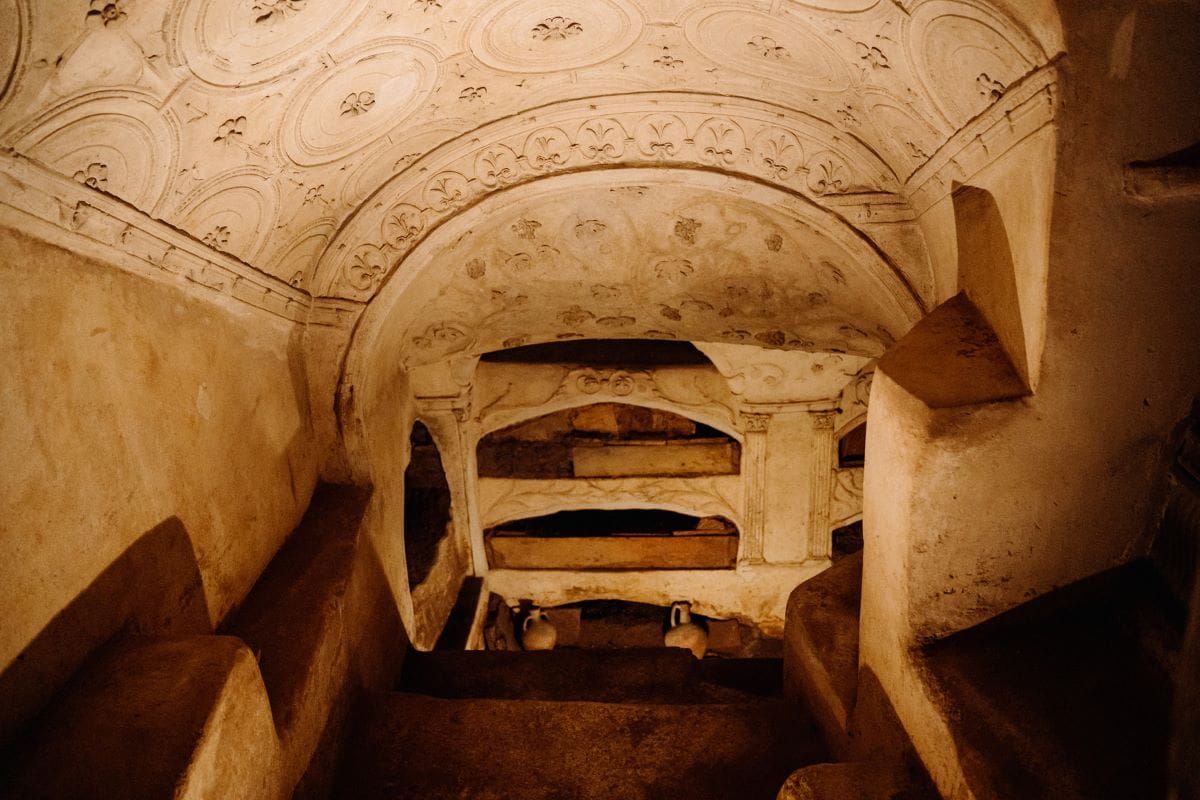
The catacombs of St. Callixtus are one of the largest and most important catacombs in Rome.
The catacombs of St. Callixtus are one of the largest and most important catacombs in Rome, with the most popes buried there, but those of St. Priscilla are the best preserved, St. Sebastian the first one, and the Domitilla Catacombs stretch over nine miles of underground tunnels and caves. They are the only ones that still house bones. Visit these and the St. Callixtus catacombs along Rome’s beautiful ancient highway, the via Appia Antica.
Explore the different catacombs of underground Rome to learn about the city’s ancient Christian past, the customs of the rich, and the homes of martyrs, saints and popes.
The Capuchin Crypt
This small crypt is decorated with the bones of nearly 4,000 skeletons, likely those of Capuchin friars. Differently from the Catacombs, this crypt seems to be built from the bones, not just filled with them. The bones cover the walls floor to ceiling, nailed there in patterns and designs. The area has several tiny chapels making up different crypts, four of which are named after various bones in the human body. Though it wasn’t intended to be a morbid experience, nonetheless this bone chapel is one you won’t forget if you take part in an underground Rome tour.
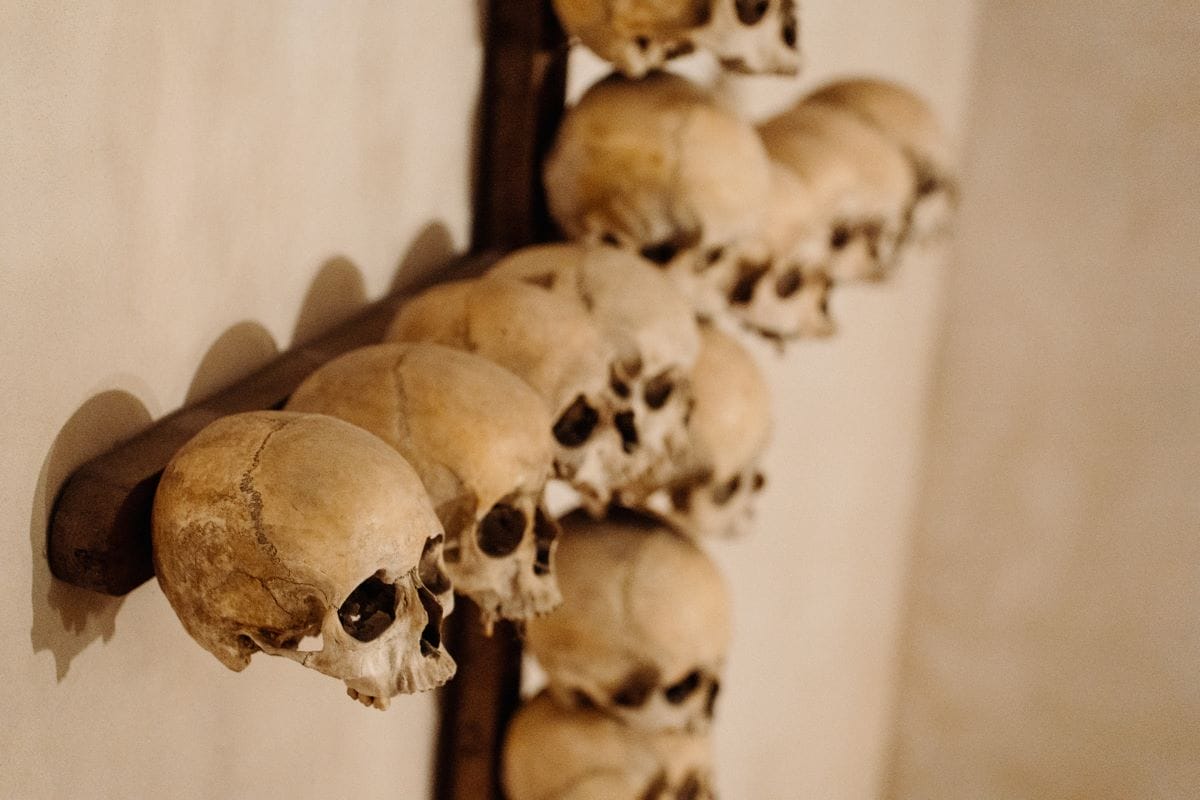
Be prepared because some sections of the catacombs are incredibly creepy.
Crypta Balbi
Located in the subterranean crypts of a Renaissance palace, the Crypta Balbi now forms one of the best-organized museums in the city. The museum occupies an entire city block that includes the archaeological excavation site, the ruins of the Renaissance villa and now the museum built on the remains of the Theater of Balbus from 13 BC, forming a part of the National Roman Museum.
Though widely overlooked by visitors, this is perhaps the only museum whose excavation clearly shows the layers of the historical center of Rome, from ancient Rome through Medieval times up until today. At the Crypta Balbi it’s possible to trace major archeological and architectural periods of the cities urban life.
Domus Romane di Palazzo Valentini
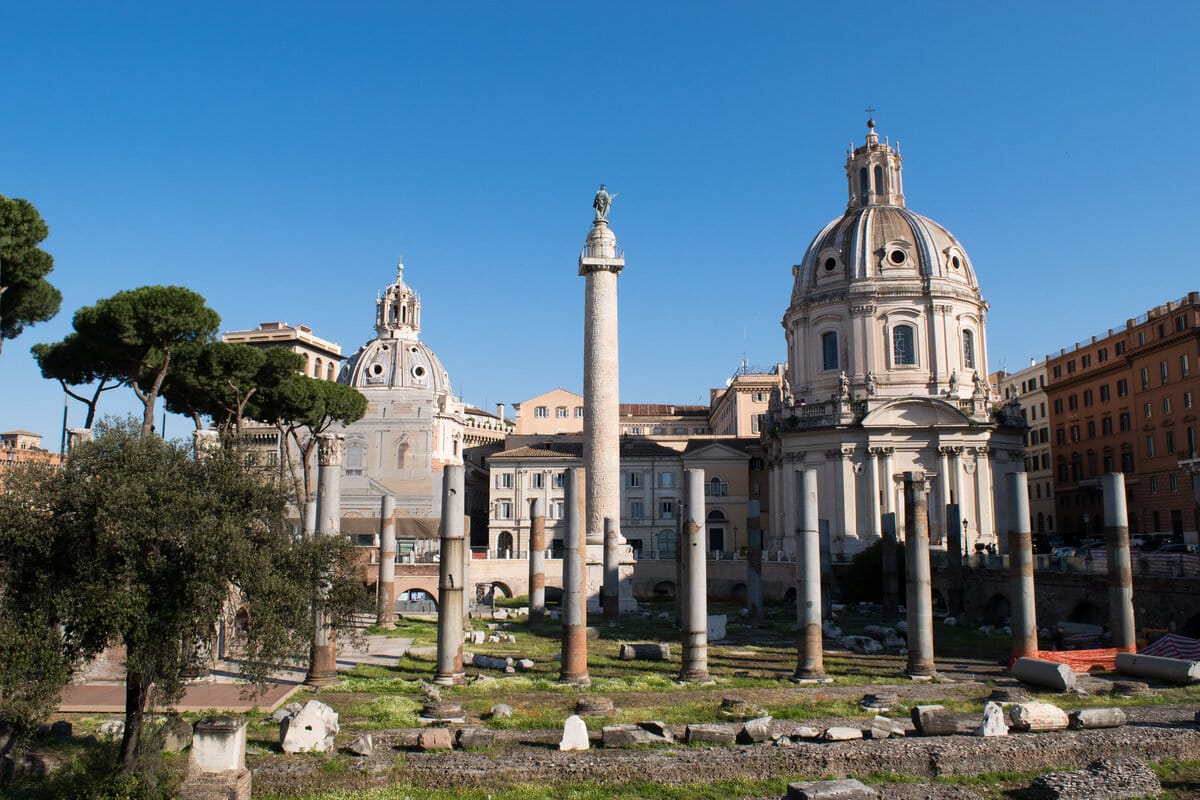
The Roman houses, or “domus romane” underneath the Palazzo Valentini are a preserved glimpse into the Roman elite of the Imperial Age. Photo credit: Mark Pazolli
Among the temples, palaces and catacombs of underground Rome are also examples of every day life in the Eternal City. Now on display are the archeological remains of opulent Imperial-style villas underneath the 16th century Palazzo Valentini in Rome. These Roman houses, or “domus romane” are a preserved glimpse into the Roman elite of the Imperial Age. Tour the houses of senators and other politicians that are still decorated with mosaics, marble and gold. The structures have been “recreated” for visitors with light shows.
Hadrian’s Villa underground tunnels
In 2013 a network of tunnels was found in a sort-of underground city beneath Hadrian’s Villa. Located in Tivoli, just 20 miles east of Rome, Hadrian’s Villa (or Villa Adriana, in Italian) was built on 296 acres of land by Emperor Hadrian in the 2nd century AD. Described as the “form of an ‘ideal city’” it is a UNESCO World Heritage Site.
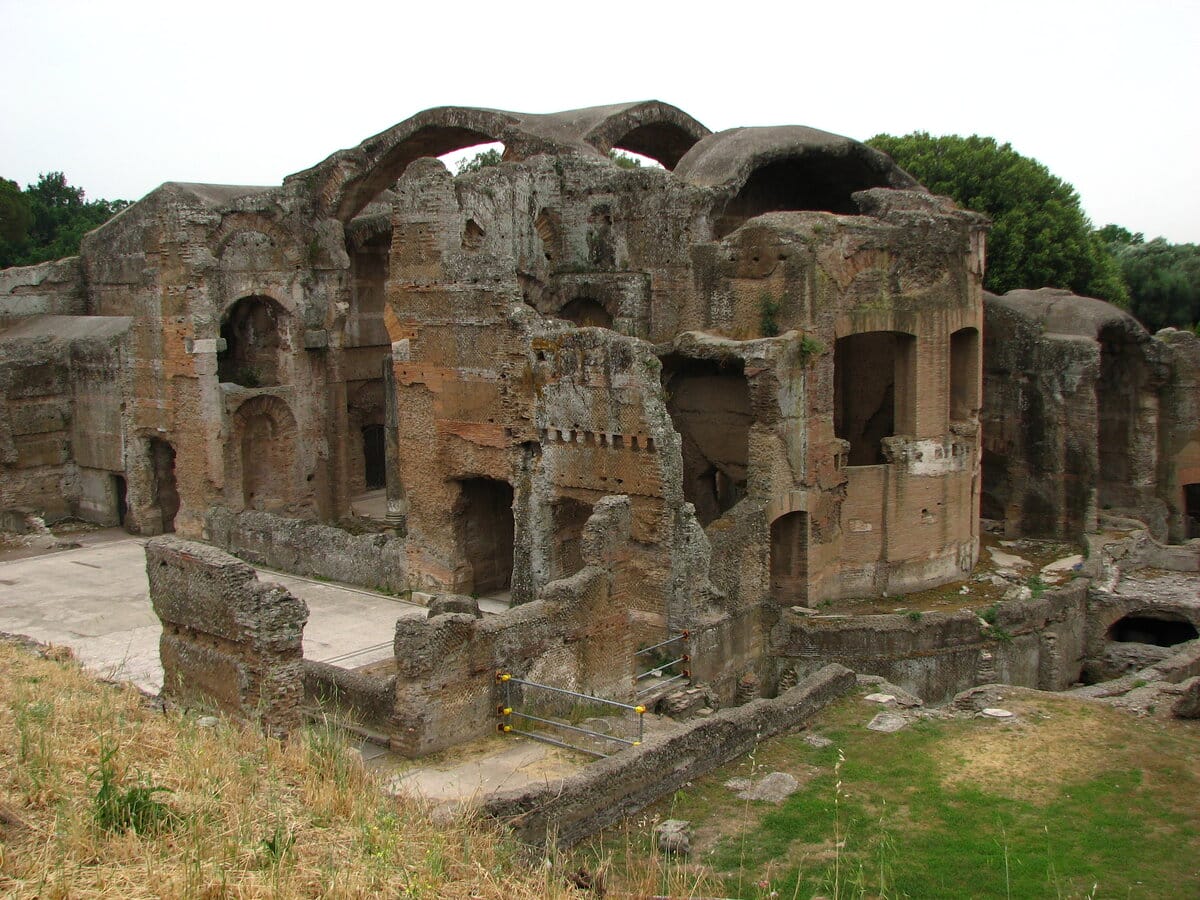
The vast complex at Hadrian’s Villa has 30 buildings of palaces, spas, pavilions, libraries, gardens, pools and fountains. Photo credit: Patrick Denker
The vast complex has 30 buildings of palaces, spas, pavilions, libraries, gardens, pools and fountains. It also, apparently, has a complex system of underground roads likely used by carts and wagons to transport slaves, foods and other goods to and from the villa, leaving the grounds free from such unsightly activities. Much of the finds are blocked by earth and debris, but archeologists have been working hard to free areas and eventually open them to the public. Unfortunately while they work on the restorations, there are no underground visits as of now, but keep an eye out for the future
The surprising part is that these locations only begin to scratch the surface – pun intended – of underground Rome. Each layer represents another history, era, architecture and ideology of the magnificent Eternal City.
Embarking on an exploration of underground Rome isn’t merely a journey through time; it’s an immersive odyssey into the soul of an ancient city. From the echoes of gladiator spectacles in the Colosseum’s hypogeum to the sacred grounds of the Vatican Necropolis, every step beneath Rome’s surface unravels a new chapter of human endeavor and ingenuity. As visitors traverse these hidden passages and forgotten chambers, they become part of a story that transcends millennia, connecting the present to an illustrious past. Underground Rome isn’t just a tour; it’s an invitation to witness the beating heart of a city that continues to inspire awe and wonder across ages.
Update notice: This article was updated on November 26, 2024.
by Gina Mussio
View more by Gina ›Book a Tour

Pristine Sistine - The Chapel at its Best
€89
1794 reviews

Premium Colosseum Tour with Roman Forum Palatine Hill
€56
850 reviews

Pasta-Making Class: Cook, Dine Drink Wine with a Local Chef
€64
121 reviews

Crypts, Bones Catacombs: Underground Tour of Rome
€69
401 reviews

VIP Doge's Palace Secret Passages Tour
€79
18 reviews

Legendary Venice: St. Mark's Basilica, Terrace Doge's Palace
€69
286 reviews









